Guest post by Kyle Clark, Conservation Technician, Preservation and Conservation, University of Michigan Library
The Renaissance and Medieval Manuscript Collection belonging to the University of Michigan Library consists of an impressive array of medieval and early modern manuscripts from multiple cultures and languages, including Greek, Latin, Armenian, and Ethiopian. Fortunately, many of the manuscripts within this collection have largely been left in their original bindings and most damages have gone untreated. Because of the presence of original binding materials (and damages) the collection is an incredible resource for scholars and researchers who want to learn from studying historic manuscripts in their original formats. In other words, because the collection has only seen minimal conservation intervention in regard to repairing its bindings, researchers are able to observe the structural workings and materials of some of the manuscripts which in repaired or undamaged volumes are usually left unseen. In order to preserve the uniqueness and originality of these materials, curator Pablo Alvarez, conservation technician Kyle Clark (myself), and the head of conservation and book repair Marieka Kaye agreed that it would be appropriate to explore ways in which we can protect these manuscripts for future researchers.
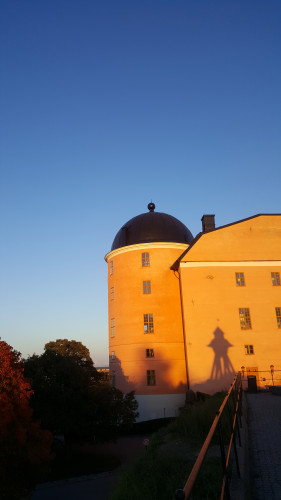
Uppsala Castle, Uppasa, Sweden. Photo by Kyle Clark
In the fall of 2018, I was awarded a grant from the University of Michigan Library’s Research and Creative Projects Committee to study enclosures used for manuscript collections at several libraries in Europe with notable manuscript collections. The list of libraries included Uppsala University in Uppsala, Sweden, Kungliga Biblioteket in Stockholm, Sweden, Trinity College in Dublin, Ireland, and the Chester Beatty Library in Dublin, Ireland. At each institution I interviewed conservators about their manuscript storage practices and philosophies, viewed and photographed examples of the types of enclosure each institution uses, and at Uppsala University I had the opportunity to make models of the enclosures they use (in addition to making a few boxes for books in the collection of Uppsala University).
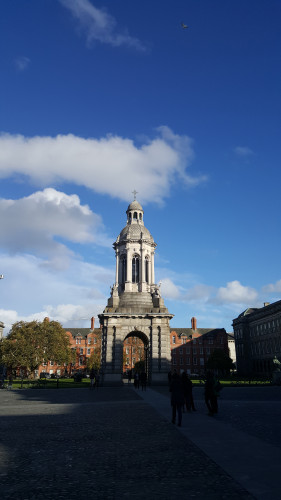
Trinity College, Dublin, Ireland. Photo by Kyle Clark
The structures used to protect manuscripts at these institutions predominantly consist of boxes constructed with archival corrugated board with the exception of the employment of clamshell boxes (made with book cloth and binders board) for some special collections materials at Trinity College Dublin and the Chester Beatty Library. The use of archival corrugated boards for housing library materials is not unique to these institutions. Here at the University of Michigan Library (and many libraries throughout the world) we use commercially ordered corrugated boxes for special collections materials. For some special projects, we will construct clamshell boxes made with bookcloth and binders board. In a conversation with conservator John Gillis of Trinity College Dublin, Mr. Gillis described a practical approach to considering the level of protection that should be given to books and manuscripts. Ideas such as who will be handling the manuscript, where the manuscript will be housed, the cultural/institutional significance of the manuscript, the structural character of the manuscript, and the manuscripts expected use all go into guiding decisions on how to best preserve bibliographic materials. This conversation with Mr. Gillis and the other interviews with conservators during the course of this research were invaluable when deciding the next steps for the ensured preservation of Michigan’s manuscripts.
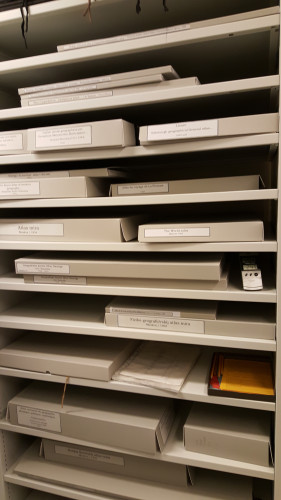
Flat-shelving storage. Uppsala University, Uppsala, Sweden. Photo by Kyle Clark
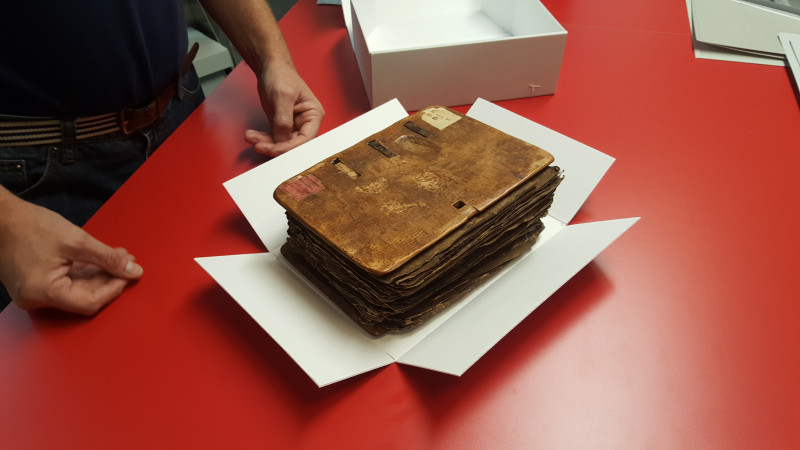
Example of the rehousing of a manuscript at the National Library of Sweden (Kungliga Biblioteket). Photo by Kyle Clark
Following my return to the University of Michigan, I met with Marieka, Pablo, and Shannon Zachary (Head of the Depart. of Preservation & Conservation) to talk about how the Renaissance and Medieval Manuscript Collection’s historical and structural integrity might be ensured through improved manuscript housings. Michigan’s manuscript collection has historically been housed in green, rounded spine, clamshell boxes made with thin bookcloth and binders board. The number of manuscripts within the collection is a relatively manageable size (a couple hundred bound and unbound manuscripts). Given the former practice of using clamshell boxes and the relatively small size, the decision was made to construct new clamshell boxes made with a sympathetic but more durable green bookcloth. Each new box, if necessary, is or will be fitted with customized protective supports and handling aids ensuring that each manuscript receives additional care where it is needed.
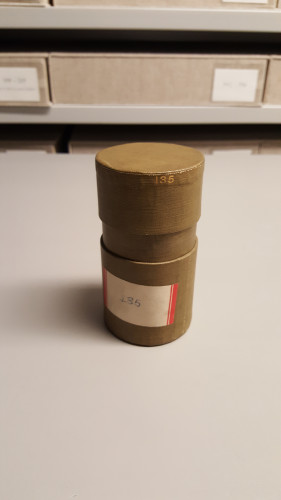
Old housing of Mich. Ms. 135. Photo by Kyle Clark
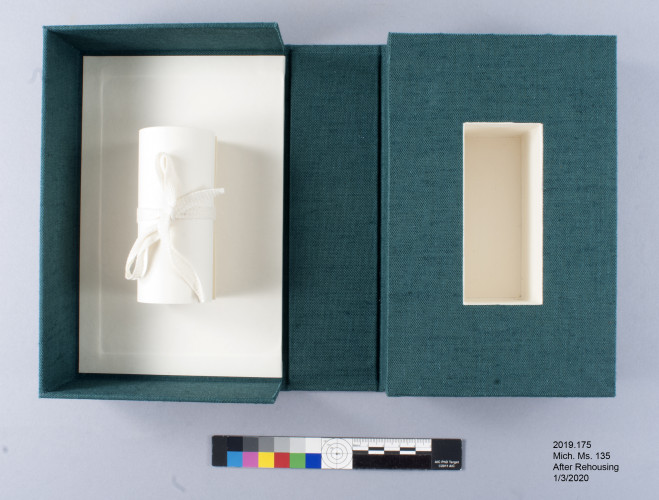
Rehousing of Mich.Ms. 135. Photo by Kyle Clark
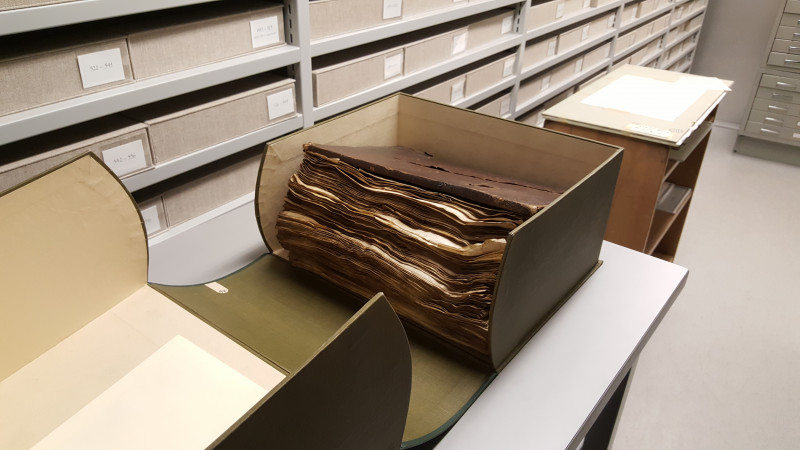
Old housing of Mich. Ms. 97. Photo by Kyle Clark
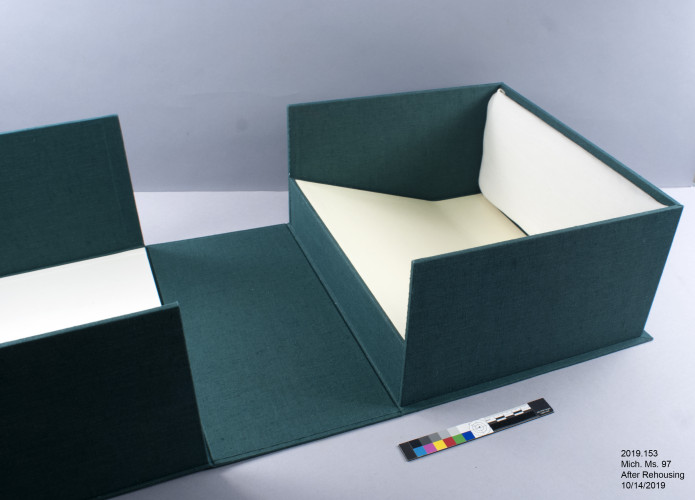
Rehousing of Mich. Ms. 97. Photo by Kyle Clark
The rehousing of the Michigan manuscript collection is nearly halfway completed, being on schedule to be completely rehoused within 2020.
Kyle Clark